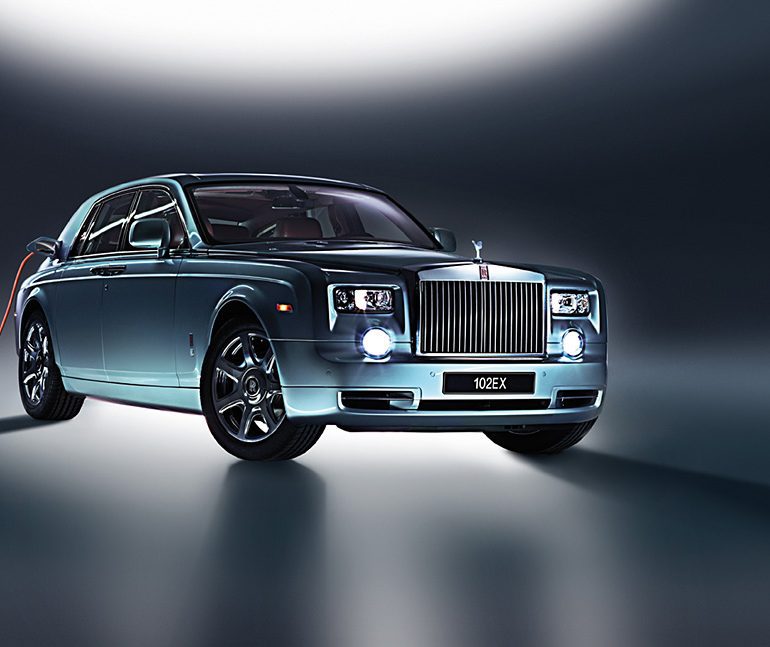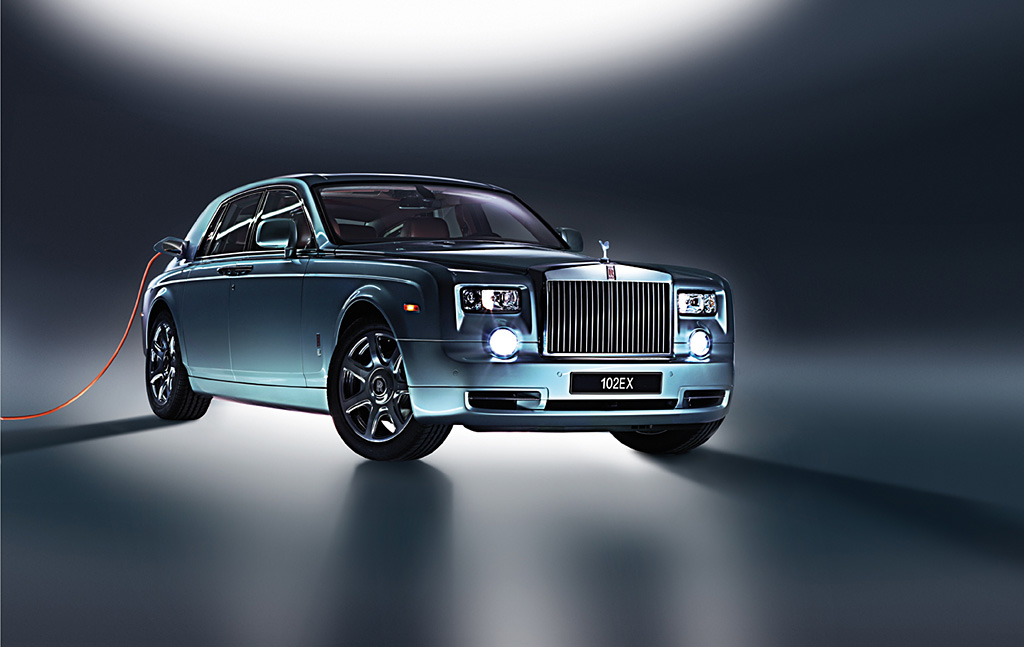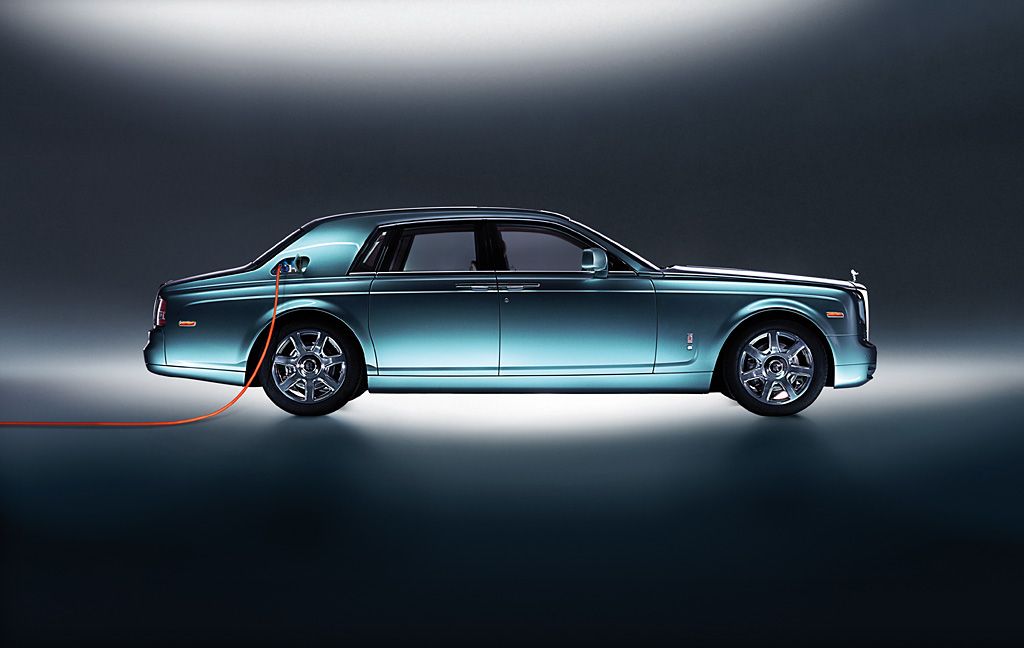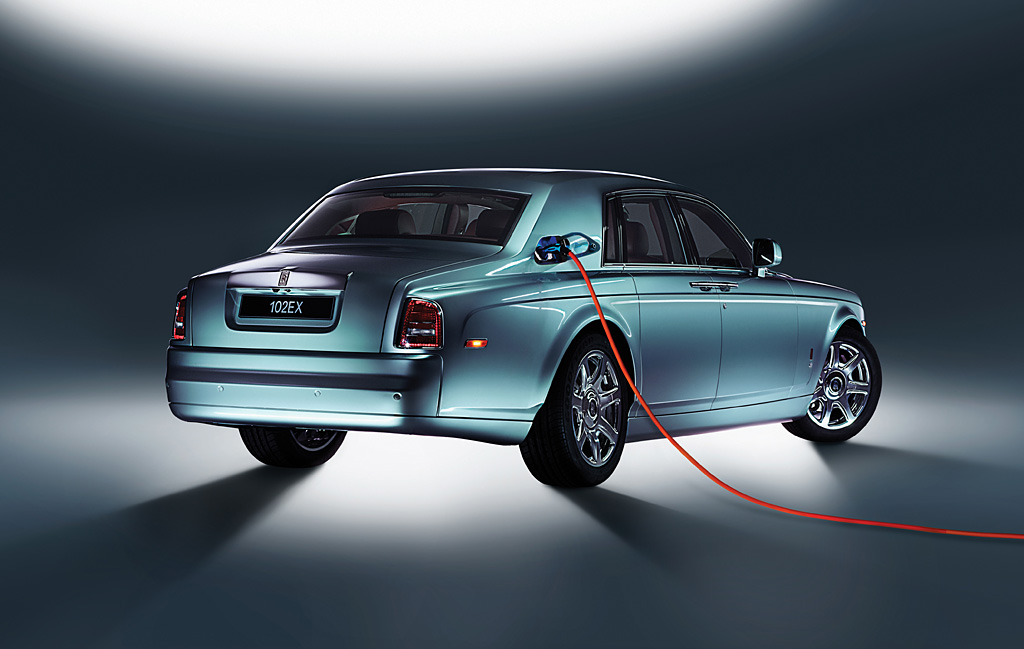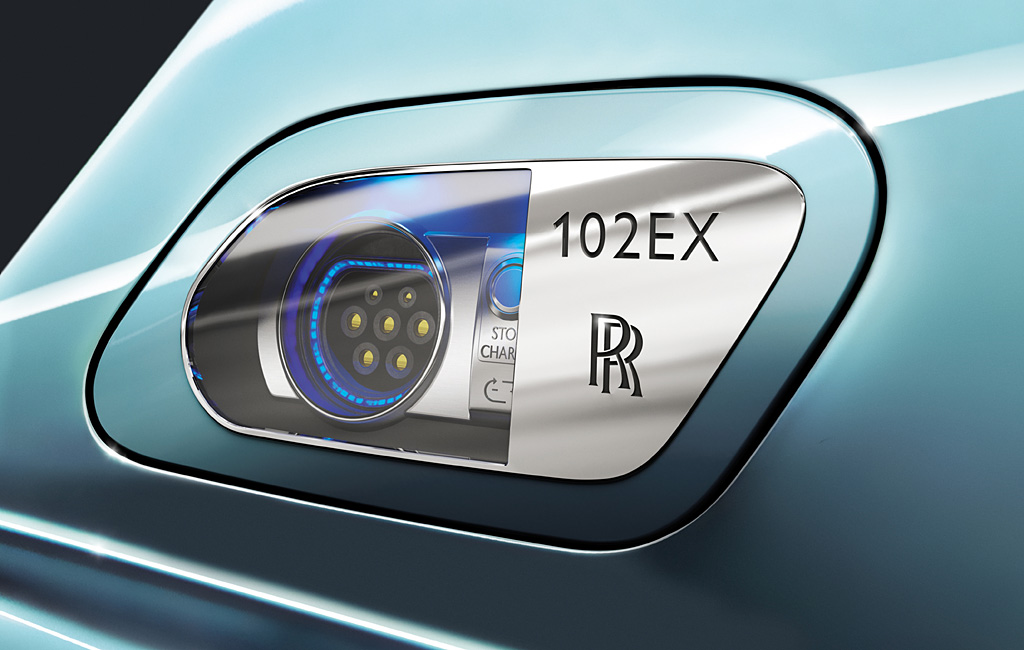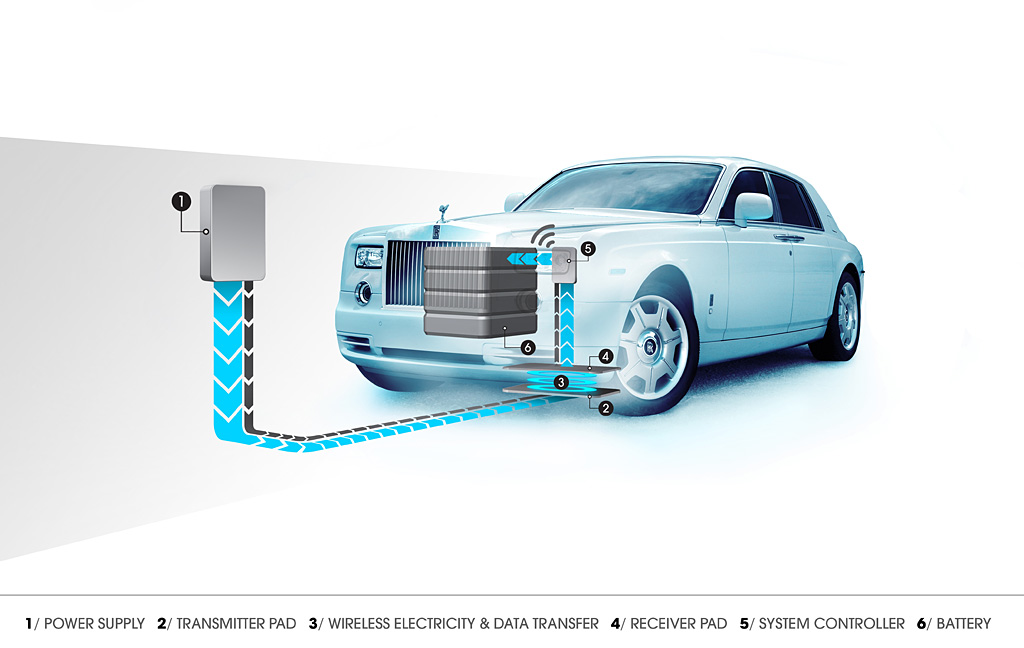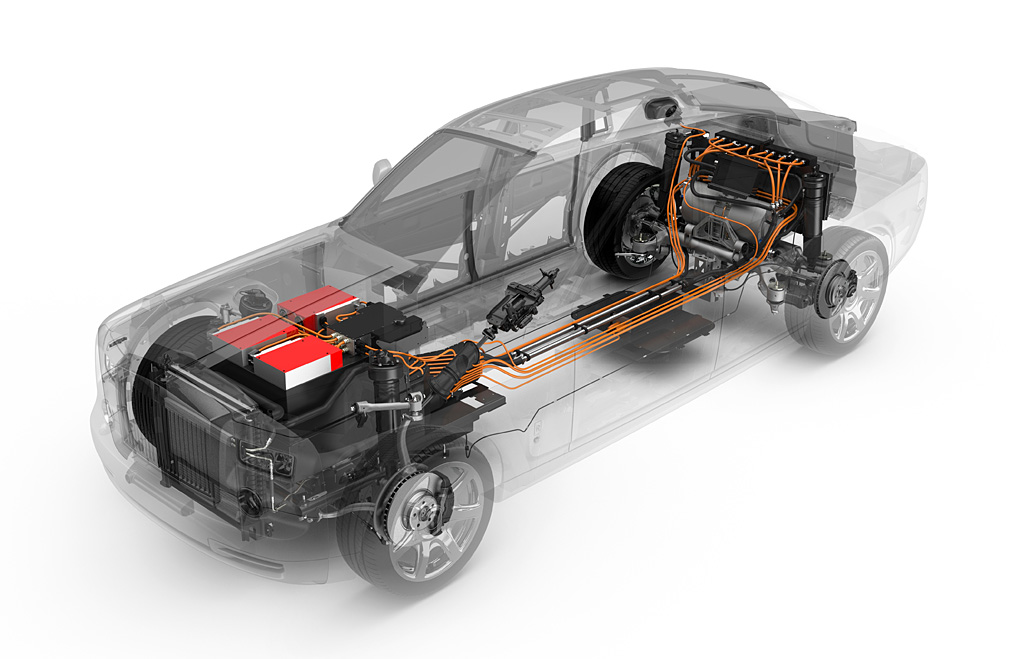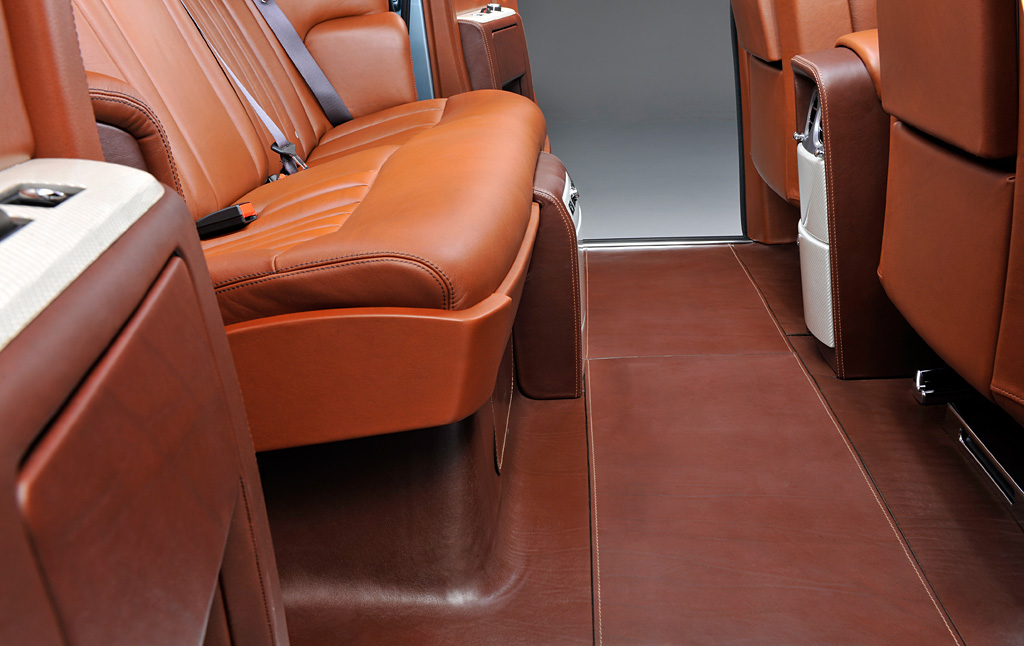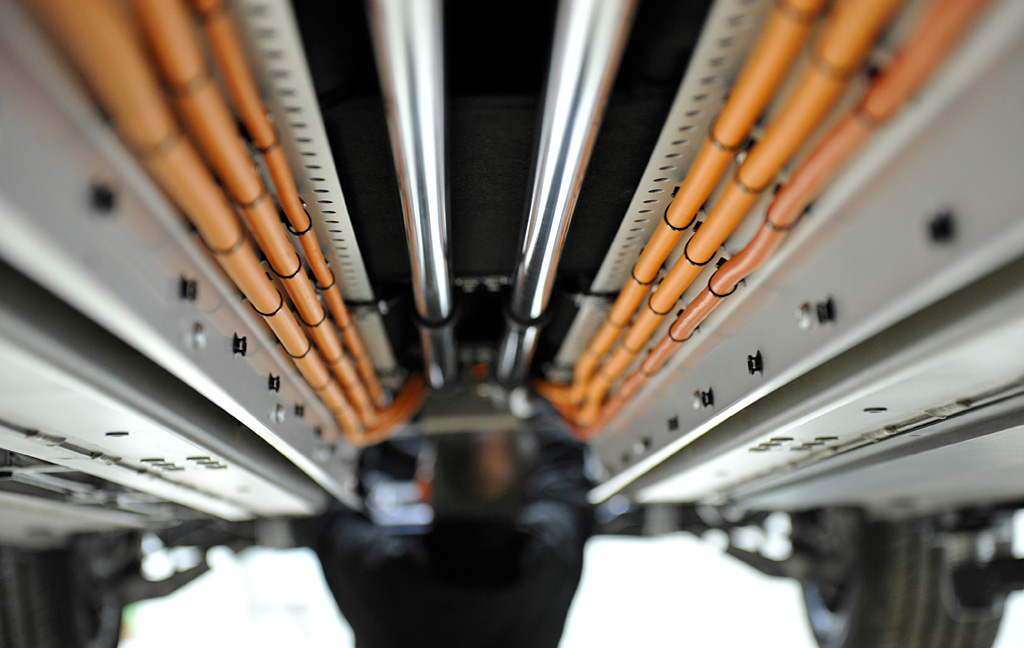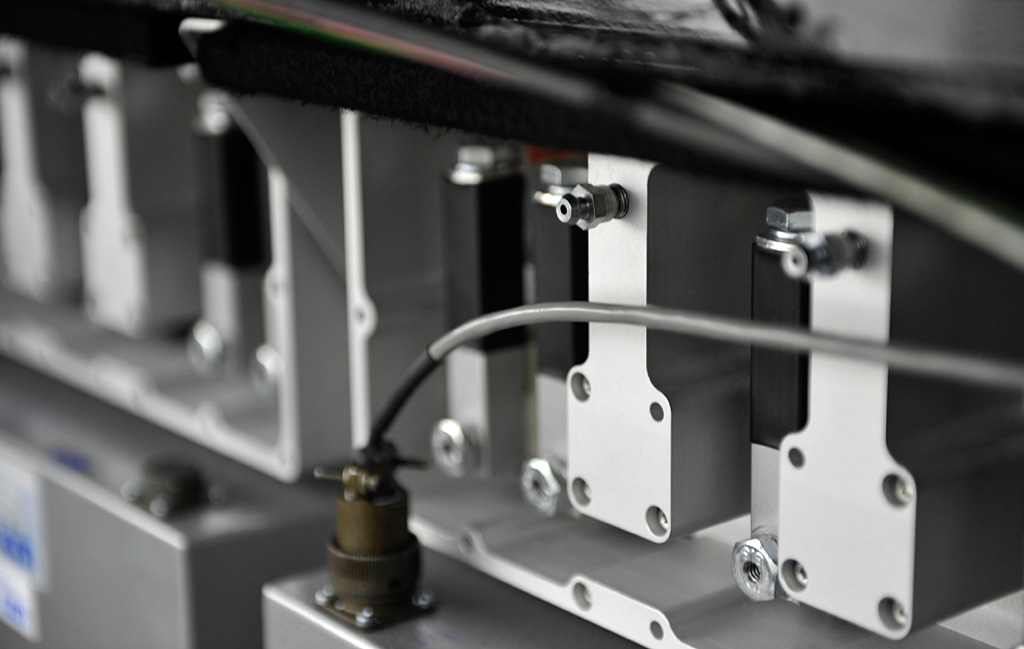2011 Rolls-Royce 102EX
Rolls-Royce Motor Cars proudly presents 102EX, a car that represents one of the most significant initiatives taken by the company in recent years. It is the world’s first battery electric vehicle for the ultra-luxury segment and continues a tradition of experimental cars running through the model generations.
Rolls-Royce produces cars that represent the pinnacle in luxurious motoring for the world’s most discerning customers. However, the company also recognises the need to look to the future and to plan for long-term sustainable growth. An investigation into alternative drive-train options is an important step in that process.
With 102EX, also to be known as the Phantom Experimental Electric (EE), it is the company’s intention to carefully test the opinions and reactions to alternative drive-train options of a range of stakeholders including owners, enthusiasts, members of the public and the media.
Throughout 2011 Phantom EE will serve as a working test bed, giving owners, VIPs, the media and enthusiasts the opportunity to experience an established alternative drive-train technology and to feed back their experiences, thoughts and concerns directly.
The bank of research gathered from a global drive programme that will include Europe, the Middle East, Asia and North America will be crucial to decisions affecting alternative drive-trains for Rolls-Royce Motor Cars.
There are no plans to build a production version of this car. Phantom EE’s role is as a test bed, designed to explore established BEV technologies, to pose as well as to answer questions.
Can Phantom EE deliver an acceptable range for customers without frequent re-charging? Is there confidence in its ability to operate in extreme conditions? Will reliability and quality be consistent with expectations of the world’s pinnacle automotive brand?
Phantom EE also poses more fundamental questions: Is an all-electric drive-train able to deliver an authentic Rolls-Royce experience for customers, an experience that truly befits the marque?
Whether all-electric or another alternative drive-train option is right for Rolls-Royce will become clearer when the test programme is complete at the end of the year.
102EX – PHANTOM EXPERIMENTAL ELECTRIC (EE)
Reinvention is part of being timeless and Phantom EE is the latest in a line of experimental vehicles from Rolls-Royce Motor Cars. It builds on a legacy which dates back to 1919 and 1EX.
Experimental models are used to test and evaluate new technologies and applications which could shape future Rolls-Royce products. Unlike a concept car, Rolls-Royce experimental models are always fully functioning, drivable vehicles using tangible materials such as wood, leather and metals rather than clay and foam or other concepts.
They present engineers and designers with the opportunity for real-world innovation and are used not only to showcase new components and engineering techniques but also to evaluate them.
The latest in this line of experimental projects began with a Rolls-Royce Phantom, a strikingly modern and immaculately proportioned car in which high technology and hand-craftsmanship combine to produce something extraordinary.
Phantom EE features the car’s ground-breaking aluminium spaceframe, so important to dynamic prowess, as well as the sense of calm and tranquillity enjoyed by occupants. However, the naturally aspirated 6.75-litre V12 petrol engine and 6-speed gearbox have been replaced by a lithium-ion battery pack and two electric motors mounted on the rear sub-frame. These motors are connected to a single speed transmission with integrated differential.
Each motor is power rated to 145kW, giving Phantom EE a maximum power output of 290kW and torque of 800Nm available over a wide band. This compares with 338kW for standard Phantom with maximum torque of 720Nm, delivered at 3,500rpm.
The Nickel Cobalt Manganese battery chemistry holds around 230Wh/kg, a high energy density which is important in achieving an acceptable range between re-charges. Pre-launch tests suggests Phantom EE should run to a range of up to 200km. Delivered on an effortless wave of torque, 0-60mph will be achieved in under eight seconds (5.7 seconds in standard Phantom), with top speed limited to 160kph.
This is the first application of the technology in a GKL++ segment (super luxury vehicles priced at more than €200,000) and the battery pack is thought to be the largest ever fitted to a road car.
Evaluation of technology is an important part of the test programme. However, more fundamentally the car will seek answers to questions posed of Rolls-Royce owners: what their needs might be for the future considering factors such as range, performance and re-charging infrastructure.
The feedback from customers – as well as media, stakeholders and enthusiasts via the website www.electricluxury.com – will prove essential in evaluating the appropriateness of battery electric technology for Rolls-Royce.
It will help inform a decision on whether all-electric, or another alternative drive-train technology, will be most appropriate for the world’s best cars of the future.
DESIGN
“It’s a credible design concept that perfectly complements the experimental nature of the car, exploring options in light, space and use of materials. Had we changed the overall aesthetic, the concept would have lost credibility; our audience would assume it was simply a styling exercise. The reality is that this is an experimental vehicle in its truest sense, challenging perceptions, emotions and values – as well as exploring alternative drive-train technology.” – Ian Cameron, Chief Designer Rolls-Royce Motor Cars.
102EX bears the famous hallmarks of the Rolls-Royce Phantom on which it is based, such as hand craftsmanship, fine detailing and iconic design cues like the pantheon grille and the Spirit of Ecstasy which celebrates its centenary in 2011. However, at the core of its design is the essence of an experimental vehicle, establishing this car’s status as a test bed, while subtly alluding to its electric power plant.
The design creates a different aesthetic, experimenting with interior space and materials, as well as trims and illumination. These are framed around functional considerations for a battery electric Rolls-Royce – how the car is likely to be used and the changes that the technology brings in terms of interior space and exterior detailing. Naturally, these changes are executed in a way that affirms the car’s credentials as a Rolls-Royce.
ATLANTIC CHROME EXTERIOR
Our designers were challenged with creating a finish for Phantom EE which immediately signified a special car, distinguishing it from standard Phantom models in the absence of many overt design changes. Not an easy task, since all Phantom models are special – with customers benefitting from a range of bespoke paint options running to some 45,000 colours.
Extensive research however had revealed a highly reflective paint using ceramic nano particles. Under a microscope these mimic the impression of a silver metal, but are between 8,000 and 80,000 times smaller than the thickness of a hair or 1,000 times smaller than the size of a normal metallic paint particle.
Test parts were produced and the design team were impressed with the results, knowing that the larger the object covered the better it would look. But they were under no illusions as to the task ahead.
In all sixteen coats of paint were needed, of which four were Atlantic Chrome, and many hours of time dedicated to ensuring a perfect end result. The finish is a striking one. Phantom EE commands the stage, with taut almost chiselled lines giving a wet impression to the car. This only grows in character as light conditions change.
ILLUMINATED SPIRIT OF ECSTASY
As well as the launch of 102EX, 2011 marks another milestone in the history of Rolls-Royce Motor Cars. On 6 February 1911, the design for Charles Sykes’ Spirit of Ecstasy was first registered, signalling the start of a 100 year period in which this famous icon has adorned the prow of Rolls-Royce cars, from the famous Silver Ghosts, Clouds and Shadows of the 20th Century to today’s hand-built Phantom and Ghost models.
Phantom EE’s Spirit of Ecstasy, sits atop the radiator grille above the red double-R badge applied to EX models. Made of Makrolon, rather than stainless steel, it will be bathed in blue LED light, hinting at the electric technology beneath the bonnet. This stunning image complements the keynote graphic of website – www.electricluxury.com – where Rolls-Royce Motor Cars will expand the debate on the question of electric luxury to the online community, taking views from enthusiasts, media and members of the public.
INTERIOR
Atlantic chrome-finished dashboard dials echo the exterior colour, providing a sense of interior-exterior balance and their analogue displays maintain the timeless architecture that every Phantom interior commands.
Other changes hint at further evolutionary designs applied to the car. For example, some dials have been subtly modified to provide information needed by the driver of an electric vehicle. The fuel gauge in particular has been replaced by an elegant battery charge indicator.
One of the most pleasing features of every Rolls-Royce Phantom interior is the power reserve dial located beside the speedometer. This reveals how much of the V12 engine’s power remains at a driver’s disposal. Phantom EE takes this concept a step further.
It features a regeneration symbol which takes the dial beyond the normal 100% line of standard Phantom. Depending on the momentum gathered, it conveys the degree of re-charge taking place as the vehicle is in motion.
The interior of Phantom EE represents a departure from the traditional wood sets that define the majority of cars delivered to customers, providing a unique finish to the car. It features a distinctive aluminised foil weave that lifts the environment of the interior, contrasting sharply with the darker natural leather within. As is the case with Corinova leather, the aim is to challenge traditional perceptions of what might constitute a Rolls-Royce interior design scheme.
EXTERIOR RE-CHARGING POINT
Re-charging is undertaken with a plug and five-pin socket which takes the place of the normal fuel filling mechanism for Phantom. The standard fuel filler cap has been replaced by a design featuring a clear window, displaying the RR logo and 102EX motif. The window frames rear-mounted, tricolour LEDs which present the car’s charging status.
On start up, the socket is bathed in blue light. This begins to flash as charging commences. When completely charged, the display turns green, then flashing green as the solenoid is disengaged. A potential fault in the system is indicated by either constant or flashing red light.
Charging can be halted via a switch located adjacent to the plug. The process can also be operated inside the vehicle using controls accessed beneath the centre console, for example when induction charging is taking place.
In Detail
| submitted by | Richard Owen |
| type | Concept / Prototype Car |
| released at | 2011 Geneva Motor Show |
| built at | England |
| body stylist | Marek Djordjevic, Ian Cameron |
| engine | Electric w/NCM Battery |
| position | Front Longitudinal |
| power | 290 kw / 388.9 bhp |
| bhp/weight | 142.98 bhp per tonne |
| torque | 800 nm / 590.0 ft lbs |
| body / frame | Aluminum & Steel Body over Aluminum Spaceframe |
| driven wheels | RWD |
| front tires | Goodyear EMT 255/50 R21 106W |
| rear tires | Goodyear EMT 255/50 R21 106W |
| front brakes | Vented Discs |
| rear brakes | Vented Discs |
| front wheels | F 53.3 x 20.3 cm / 21 x 8 in |
| rear wheels | R 53.3 x 24.1 cm / 21 x 9.5 in |
| steering | Rack & Pinion w/Speed Sensitive Power Assist |
| curb weight | 2720 kg / 5998 lbs |
| wheelbase | 3570 mm / 140.6 in |
| front track | 1687 mm / 66.4 in |
| rear track | 1671 mm / 65.8 in |
| length | 5840 mm / 229.9 in |
| width | 1990 mm / 78.3 in |
| height | 1632 mm / 64.3 in |
| transmission | Single speed |
| top speed | ~160 kph / 99.36 mph |
| 0 – 60 mph | ~8.0 seconds |
| drag | 0.37 Cd |
| emission | 0 g/km |


